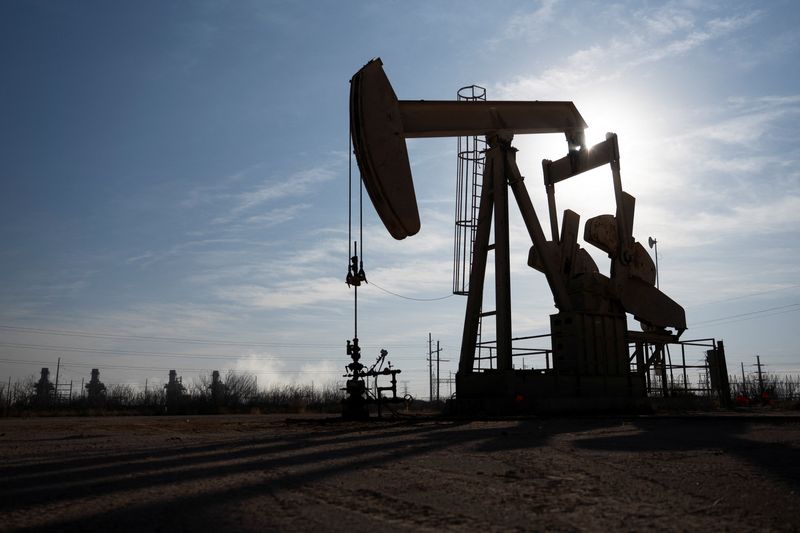
By Erwin Seba
HOUSTON (Reuters) -Crude rose more than $1 a barrel on Friday, posting its first weekly gain in three weeks after a favorable U.S. jobs report and resumed trade talks between the U.S. and China, raising hopes for growth in the world’s two largest economies.
Brent crude futures settled at $66.47 a barrel, up $1.13, or 1.73%. U.S. West Texas Intermediate crude finished at $64.58, up $1.21 or 1.91%.
Both benchmarks settled with weekly gains after declining for two straight weeks. Brent has advanced 2.75% this week, while WTI is trading 4.9% higher.
“I think the jobs report was Goldilocks,” said Phil Flynn, senior analyst with the Price Futures Group. “It was not too hot, not too cold but just right to increase the chances for an interest rate cut by the Federal Reserve.”
The U.S. Labor Department’s monthly employment report showed the unemployment rate held steady at 4.2% last month. Employers added 139,000 jobs, which combined with downward revisions to prior months’ estimates showed a cooling in labor demand but nothing abrupt; by comparison, monthly job gains averaged 160,000 last year.
A rate cut by the U.S. central bank, much desired by President Donald Trump, could boost economic growth and demand for petroleum.
“This market had priced in a lot of bad options,” said John Kilduff, partner with Again Capital. “None of it has come to pass. OPEC+ held the line. There have been talks between China and the U.S., though the details are sketchy, at least they didn’t fly apart like Elon (Musk) and Donald (Trump).”
China’s official Xinhua news agency said trade talks between Xi and Trump took place at Washington’s request on Thursday. Trump said the call had led to a “very positive conclusion”, adding the U.S. was “in very good shape with China and the trade deal”.
The oil market continued to swing with news on tariff negotiations and data showing how trade uncertainty and the impact of the U.S. levies are flowing through into the global economy.
On Saturday, OPEC+, the Organization of the Petroleum Exporting Countries and allies including Russia, agreed to ramp up output by a previously announced 411,000 barrels per day (bpd) in July. The group rejected a Saudi recommendation for a bigger output hike, part of a broader strategy to win back market share for OPEC+.
“The market looks balanced in 2Q/3Q on our estimates as oil demand rises in summer and peaks in July-August, matching supply increases from OPEC+,” HSBC said in a note.

